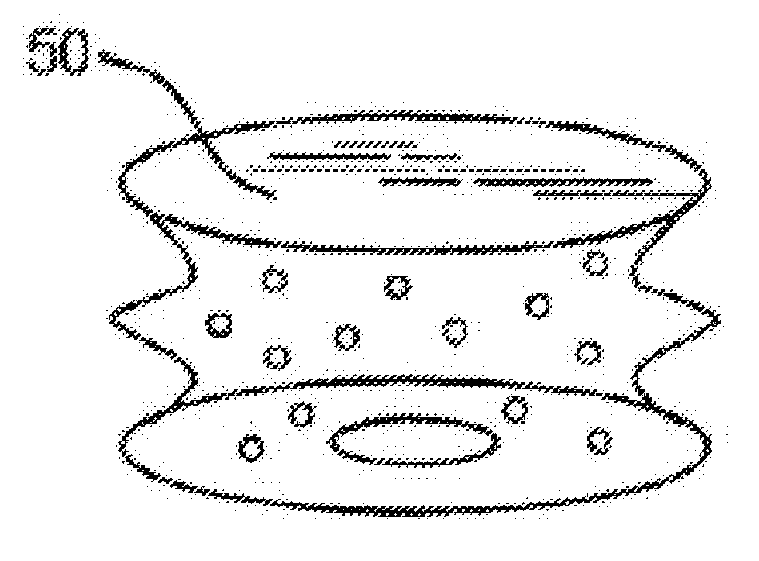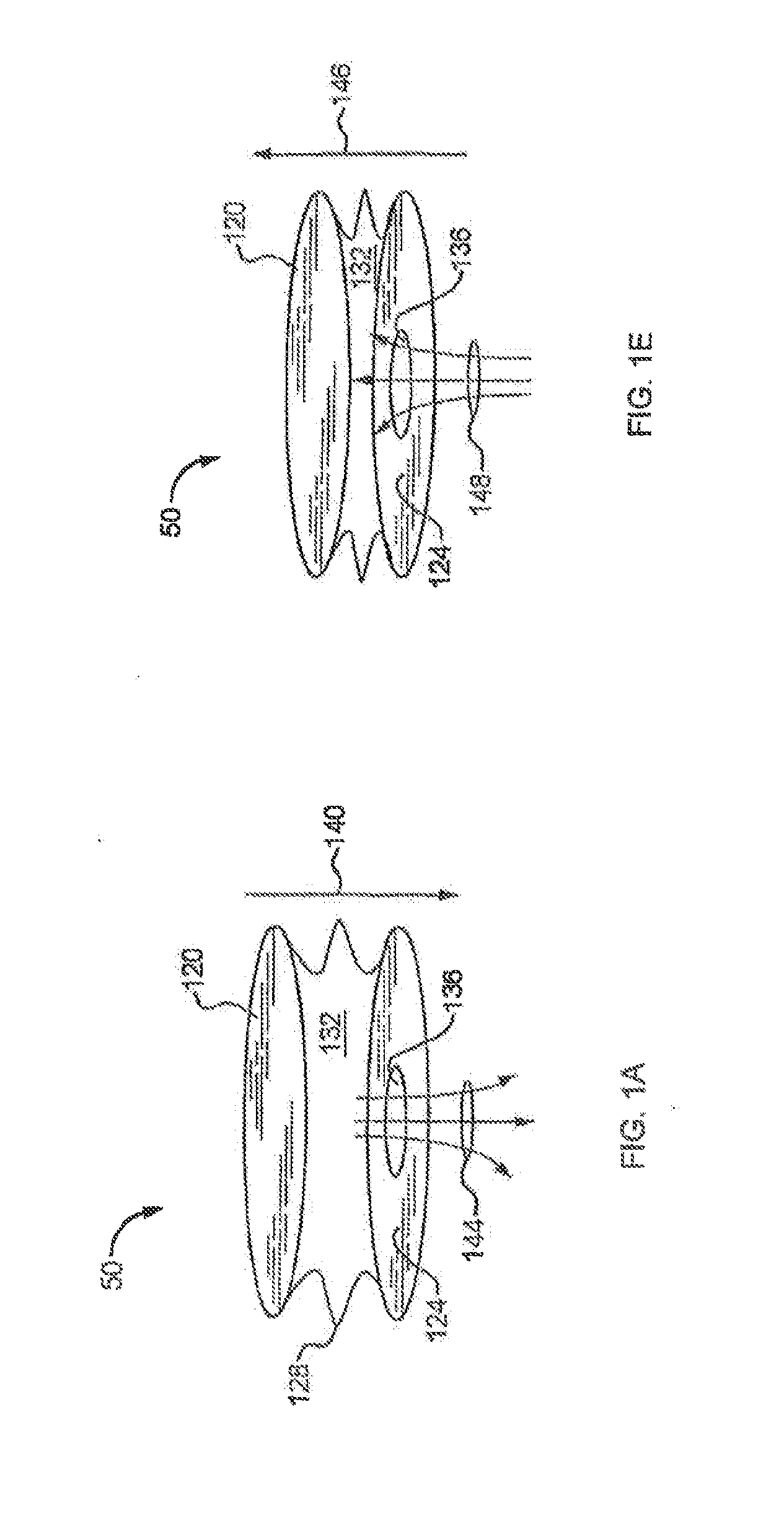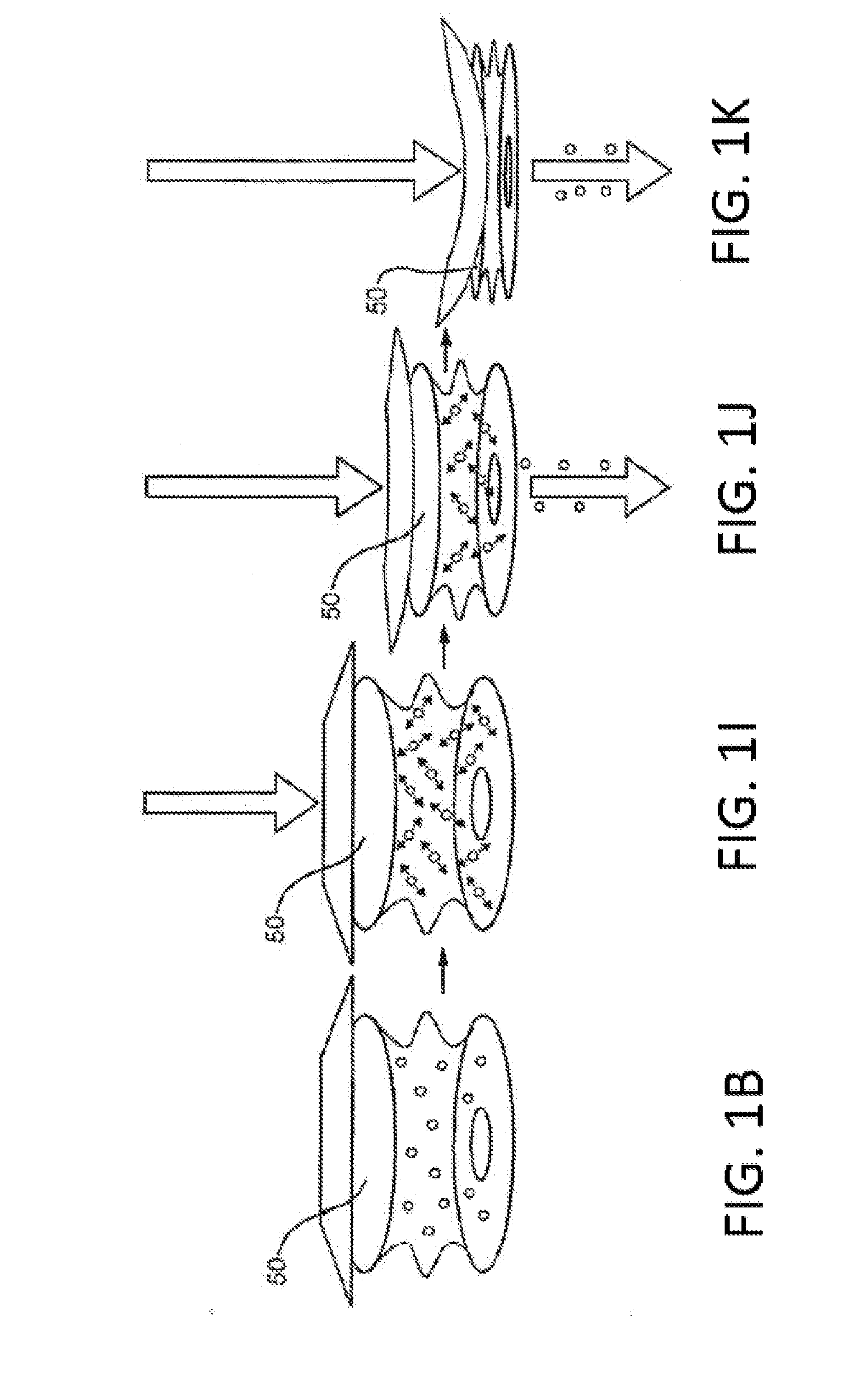Air venting, impact-absorbing compressible members
a compression member and air venting technology, applied in the direction of shock absorbers, elastic dampers, bumpers, etc., can solve the problems of affecting the study of concussions, serious problems, and difficult concussion studies, so as to achieve the effect of reducing the risk of concussion, and maintaining compressibility and stretchability and structural integrity
- Summary
- Abstract
- Description
- Claims
- Application Information
AI Technical Summary
Benefits of technology
Problems solved by technology
Method used
Image
Examples
Embodiment Construction
[0035]FIG. 1A illustrates a compressible member 50 embodied in accordance with the present invention. The member 50 has a top surface 120, a bottom surface 124, and a sidewall 128 that together define a hollow inner chamber 132. The bottom surface 124 has a small orifice 136 formed therein. When the member 50 compresses in the general direction indicated by arrow 140, airflow 144, for example, exits the small orifice 136. The member 50 is formed of TPE material which, as discussed in more detail below, because of its unique properties, optimizes the impact-absorbing properties of the compressible member 50.
[0036]Thermoplastic elastomers or TPEs are polymer blends or compounds, which exhibit thermoplastic characteristics that enable shaping into a fabricated article when heated above their melting temperature, and which possess elastomeric properties when cooled to their designed temperature range. Accordingly, TPEs combine the beneficial properties of plastic and rubber, that is, TP...
PUM
 Login to View More
Login to View More Abstract
Description
Claims
Application Information
 Login to View More
Login to View More - R&D
- Intellectual Property
- Life Sciences
- Materials
- Tech Scout
- Unparalleled Data Quality
- Higher Quality Content
- 60% Fewer Hallucinations
Browse by: Latest US Patents, China's latest patents, Technical Efficacy Thesaurus, Application Domain, Technology Topic, Popular Technical Reports.
© 2025 PatSnap. All rights reserved.Legal|Privacy policy|Modern Slavery Act Transparency Statement|Sitemap|About US| Contact US: help@patsnap.com



